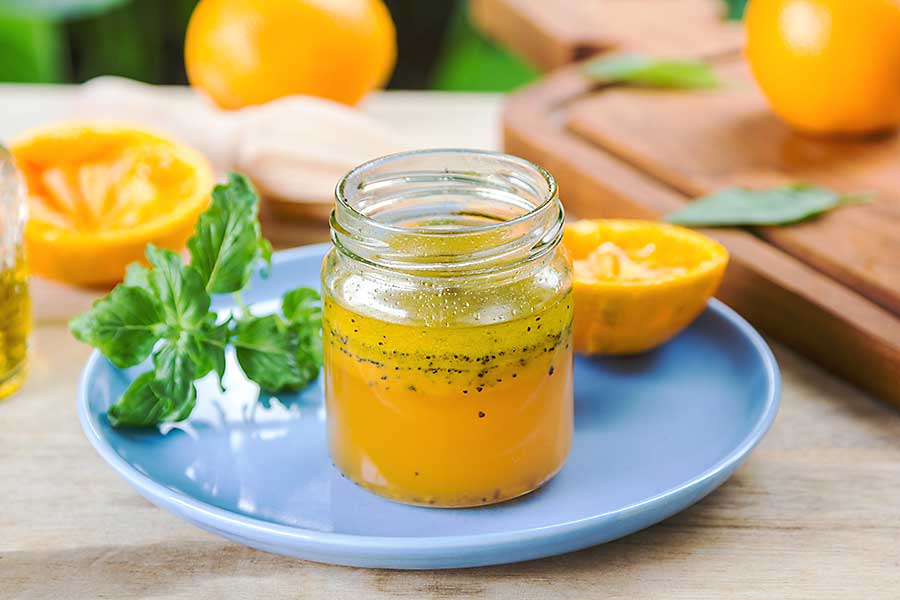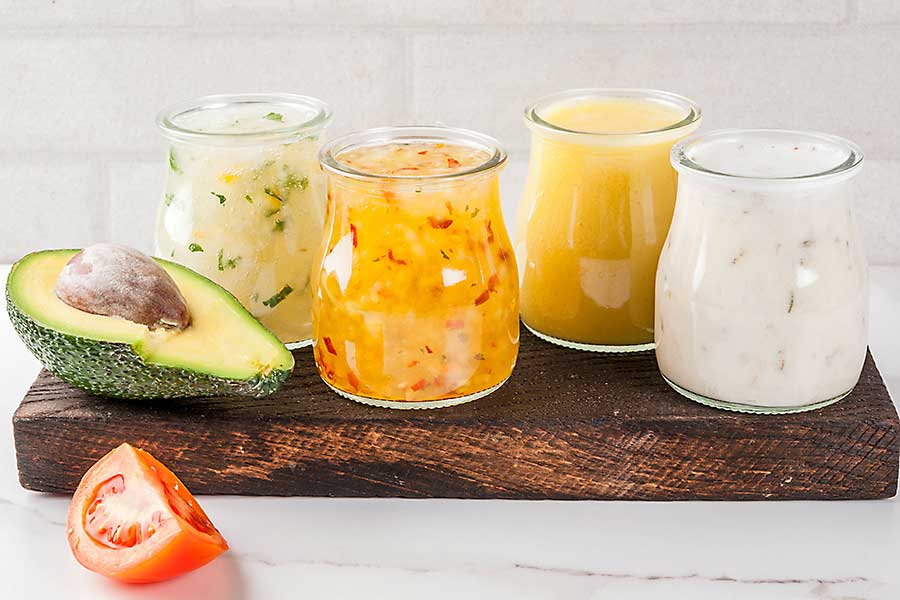Mustard Fruit
Mustard fruit, also known as mostarda di frutta, is a type of condiment that originated in Cremona in Northern Italy. It is not actually a fruit itself, but made from candied fruits that are poached in a mustard-flavoured syrup. The resulting mustard fruit is not quite a jelly, jam, or dessert dish, but more closely resembles a fruit relish. It is an excellent method of preserving fruits. Traditionally, mustard fruit was served with boiled meats or bollita misto, a type of northern Italian stew. In contemporary cooking, however, mustard fruit is served as a sweet, spicy, and sour accompaniment to cheeses.
How to make mustard fruit
Commercially prepared mustard fruit uses the essential oil of mustard to infuse the fruits with flavour. Traditionally, however, powdered mustard is used along with white wine. It is very easy to make mostarda di frutta. First, you must select firm, dried, or unripened figs, apricots, pears, cherries, and apples. Other fruits may be added if desired such as plums, peaches, tangerines, and grapes. It is important that the fruits are firm so that they retain their shape after cooking – soft fruits will break down into a pulp.
The fruits are mixed with mustard powder or seeds in a pan, along with sugar and orange and lemon zest. Diluted orange juice is then added to the mixture. Finally, the mustard power is either heated with white wine, or whisked into white wine vinegar before being stirred into the fruit mixture. The combination is simmered on a medium heat for around 20 minutes, stored in a jar, and sealed for around a week before being ready for use. Leaving the mustard fruit in a jar for a week gives the fruit time to release its sweet juices into the mixture. It also allows the relish to thicken up into a more syrupy texture. For an extra spicy kick, hot English mustard may be used.
Variations of mustard fruit
Several different variations of mostarda di frutta exist. Mostarda di Cremona, or mostarda cremonese is made with several different fruits, as in the recipe above, and is the typical mustard fruit that is known around the world. Then there is mostarda di Mantova, or mostarda di mele campanine, or mostarda mantovana. This variation is made from small Modenese green apples that have a distinctly sour flavour. Mostarda vicentina is a specialty of Vicenza in Italy. It is more jam-like in consistency and uses quince fruit as its main ingredient.
Italian mustard fruit from Vicenza is most often made with quince pulp that is cooked in sugar. In Piedmont, grape must is used to make a fragrant mustard fruit, combined with Madernessa pears and toasted hazelnuts. This kind of Italian mustard fruit pairs perfectly with cheeses like Castelmagno, Robiola, and Tuma dla Paja. In Tuscany, mustard fruit is made with a base of black-skinned Canaiolo grapes mixed with candied citron. As you can see, every region in Italy has its own take on mustard fruit, and it can be made in so many different ways depending on the fruits that are used.
How to use Italian mustard fruit in cooking
The traditional use of mustard fruit is with bollito misto, the northern Italian stew of boiled meats. Mostarda di frutta can also be chopped and added to pumpkin mash when making ravioli. When used in cooking, mustard fruit is typically pureed or finally chopped. It can be served with fish – for example, spooned over roasted salmon – or served as a pickle in roast pork and sausage dishes. However, mustard fruit goes well in any dish where you might use mustard – as in sausages, cold meats, cheeses, and dressings. It pairs wonderfully with pecorino or gorgonzola cheeses. The leftover syrup of mustard fruit makes a fantastic salad dressing.
Italian mustard fruit is most often used to accompany typical local products such as cheese and charcuterie. Different types of mustard fruit complement different types of cheese, for example, pear mustard fruit is the perfect match for marbled or matured cheeses. Other types of mustard fruits, especially sweeter ones, pair nicely with white cheeses. is It is also served as an accompaniment to traditional dishes like boiled meats, particularly fat and rich cuts like tongue, cotechino, calf’s head, or capon. Its fruity, tangy, and spicy flavour helps to break up the heaviness and fattiness of the rich meats.
The best way to use Italian mustard fruit is like any other chutney. Serve it on a cheeseboard or charcuterie plate, spread it on sandwiches, add a dollop to your steaks or meat dishes, or serve it with a side of grilled bread for dipping.
What does Italian mustard fruit taste like?
Mustard fruit has an unusual flavour that is intensely fragrant, a little spicy, and very delicious. The fragrance comes from the variety of fruits used to make Italian mustard fruit. Fruits like quinces, figs, and apples provide a range of delicious flavours which combine with the spiciness of the mustard essence to create a complex taste that’s rich and delicious. The sweetness from the sugar syrup and the fruits in mustard fruit is complemented with a pungent kick from the mustard. The spiciness of the mustard is best compared with the pungency of horseradish or wasabi.
Private Chefs, Art of Dining
CHEFIN is a private chef platform that’s reimagining social dining.
You can easily connect with 1 of our 250 private chefs and treat your guests to restaurant-quality dining experiences in the comfort of your own home, office or chosen venue. From high-end dining to quirky social food experiences, the CHEFIN platform makes it effortless for you to access gourmet food that’s worthy of a Michelin-starred establishment.
What you get:
-
- Your very own private chef who is vetted and insured,
- A customised menu for your needs,
- 24/7 concierge support,
- Complete post-dinner cleanup,
- A fun, stress-free, and unforgettably dining experience!


